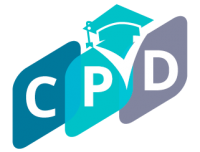Introduction:
In the ever-evolving landscape of education, the integration of technology has given rise to innovative pedagogical approaches. Blended learning, a hybrid model that combines traditional face-to-face instruction with online learning experiences, has emerged as a transformative pedagogy. In this article, we will delve into the significance of blended learning and how it seamlessly integrates technology to enhance learning experiences for students.
- Defining Blended Learning: A Fusion of Tradition and Innovation
Blended learning represents a marriage of traditional classroom teaching and modern technological tools. This pedagogical approach capitalizes on the strengths of both face-to-face instruction and online learning to create a holistic and flexible educational experience. By incorporating technology, educators can personalize learning, cater to diverse learning styles, and prepare students for the digital demands of the 21st century.
- Flexibility in Learning: Catering to Diverse Learning Styles
Blended learning offers flexibility in the learning process, catering to the diverse needs and learning styles of students. While some learners thrive in traditional classroom settings, others may benefit from the self-paced nature of online modules. Blended learning allows educators to tailor the learning experience, ensuring that students receive the support and resources they need, whether in a physical classroom or a virtual environment.
- Personalized Learning Paths: Adapting to Individual Needs
One of the key advantages of blended learning is its capacity for personalized learning paths. Technology facilitates adaptive learning platforms, where students can progress at their own pace and receive targeted support based on their strengths and weaknesses. This adaptability ensures that no student is left behind, and each can achieve mastery before moving on to new concepts.
- Enhanced Student Engagement: Interactive Online Resources
Integrating technology into the learning process provides opportunities for interactive and engaging online resources. Whether through educational games, simulations, or multimedia content, blended learning captures students’ attention and makes the learning experience more enjoyable. The use of technology encourages active participation, fostering a deeper understanding of the subject matter.
- Real-World Application: Bridging Theory and Practice
Blended learning facilitates the integration of real-world applications into the educational experience. Virtual simulations, online case studies, and interactive projects allow students to apply theoretical concepts in practical contexts. This bridge between theory and practice not only enhances comprehension but also prepares students for the complexities of real-world scenarios they may encounter in their future careers.
- Collaborative Learning Opportunities: Breaking Down Physical Barriers
Technology in blended learning extends the boundaries of collaboration beyond the physical classroom. Online discussion forums, collaborative projects, and virtual group activities enable students to engage with peers regardless of geographical constraints. This fosters a global perspective, encouraging students to collaborate with individuals from diverse backgrounds and cultures.
- Continuous Assessment and Feedback: Informing Instructional Decisions
Blended learning facilitates continuous assessment and timely feedback through digital platforms. Educators can use online tools to monitor student progress, identify areas of struggle, and provide immediate feedback. This data-driven approach allows for more informed instructional decisions, ensuring that interventions are timely and tailored to individual student needs.
- Preparation for Digital Literacy: Navigating the Digital World
In an era where digital literacy is a crucial skill, blended learning equips students with the tools and competence needed to navigate the digital world. As students engage with online platforms, collaborate through virtual communication tools, and utilize digital resources, they develop the technological literacy essential for success in higher education and the workplace.
Conclusion:
Blended learning emerges as a dynamic and responsive pedagogical approach that harnesses the potential of technology to enhance learning experiences. By seamlessly integrating traditional teaching methods with online resources, educators create a flexible and personalized learning environment. Blended learning not only caters to diverse learning styles but also prepares students for the demands of a digitally-driven world. As we continue to embrace the possibilities of educational technology, blended learning stands as a testament to the transformative power of innovation in education, promising a future where learning is not confined by physical boundaries but propelled by the limitless possibilities of a blended learning experience.
